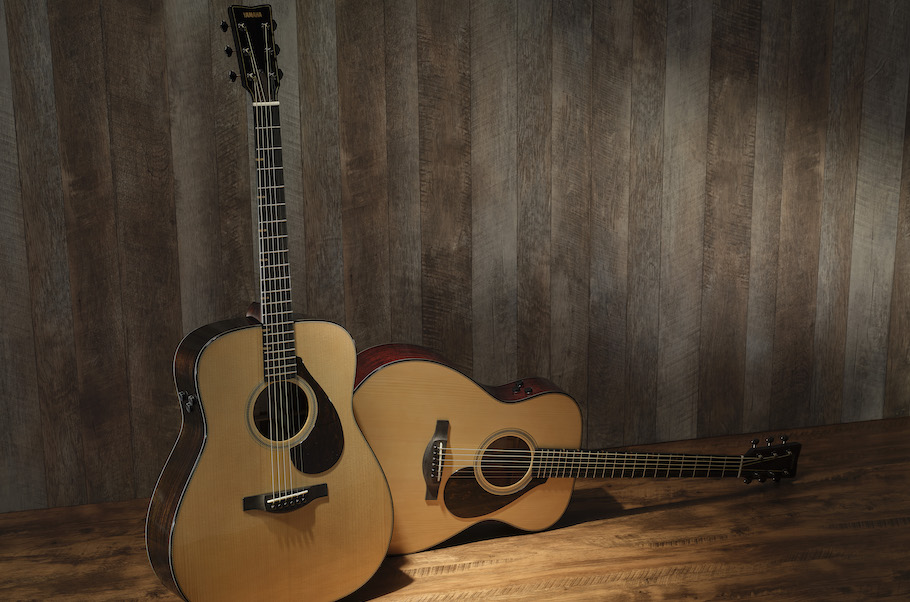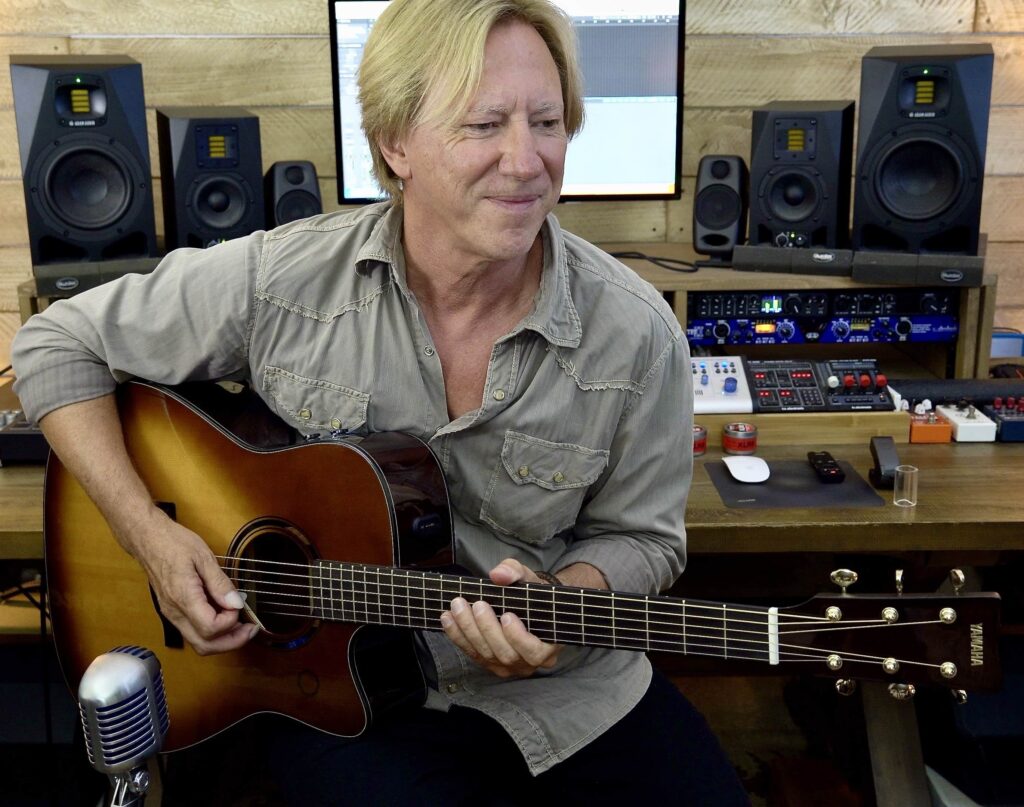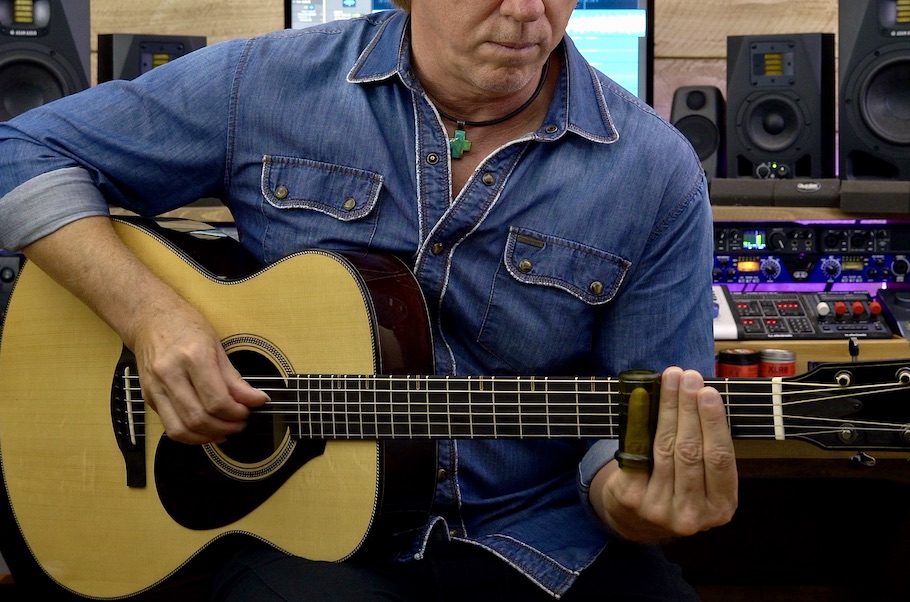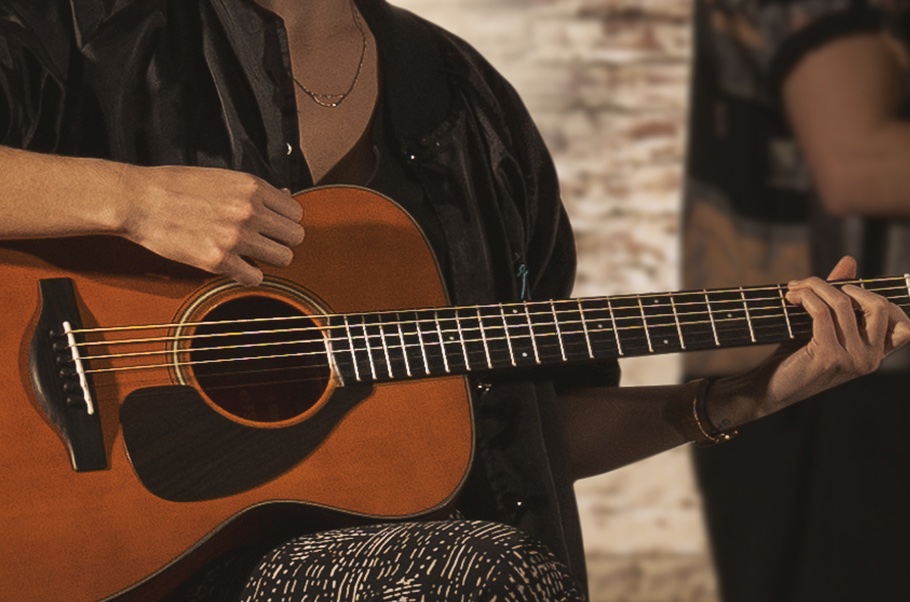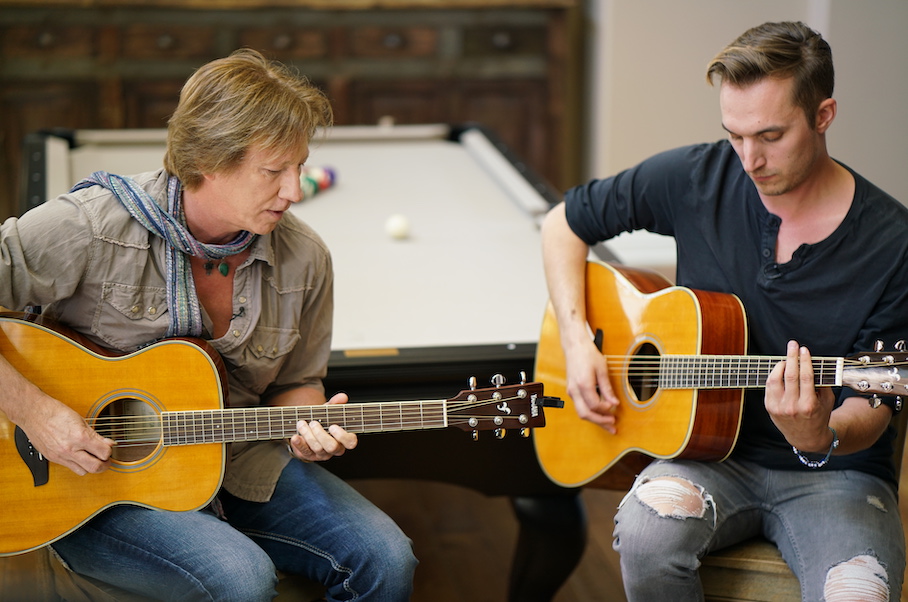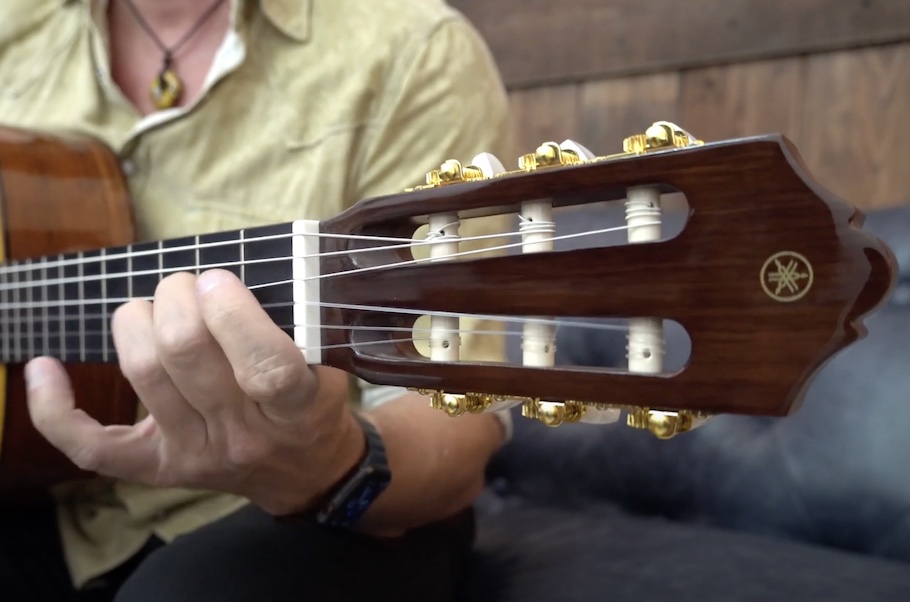Why Does Your Acoustic Guitar Sound Different in Different Rooms?
It’s all about the sound waves emanating from your instrument.
Have you ever noticed that your acoustic guitar sounds big, full and rich in some rooms but less so in others? The reason is the variation in acoustics from one space to another. Those differences are influenced by room size and shape as well as the wall and floor materials — even, to some degree, the type and placement of furniture.
In this posting, we’ll talk about how those variables impact the sound of your guitar and offer some tips on how to improve a room with subpar acoustics. By controlling a room’s acoustics, you can enhance how the guitar sounds not only from your perspective as the player but also how it sounds to listeners in the audience and/or a microphone (or microphones) when you’re being recorded.
MAKING WAVES
The sound hole is not the only place where sound waves emanate from an acoustic guitar; they also radiate out from all over the instrument, particularly the top (front) of the body, as shown in the illustration below.
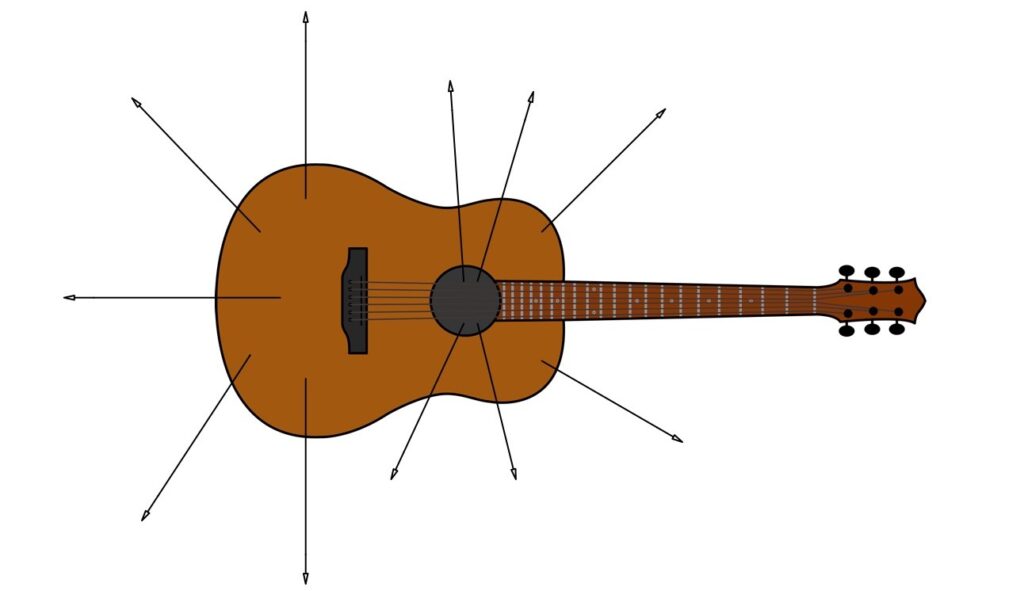
As with any sound waves, the ones coming from your acoustic guitar are categorized as direct or reflected. Direct sound consists of the waves that reach your ears (or a microphone) before they hit another surface. Reflected sound waves (usually called “reflections”) bounce off objects like walls, ceilings, floors and furniture before your ears detect them.

Because of their non-direct path, reflections arrive slightly later than direct ones. The first reflected sound waves to hit your ears are called early reflections. Unless you’re in a massive space, your ears won’t perceive the discrepancy in arrival times as an echo (we’re talking just thousandths of seconds of difference), but they will impact how you hear the guitar.
Not surprisingly, waves that arrive after the early reflections are called late reflections. Late reflections cue us as to the size of the room and define its reverberant characteristics.
An extreme example of late reflections would be those you’d hear if you were playing your guitar in a cathedral or a gymnasium. The combination of large size and hard surfaces would cause the reflections to arrive later than they would in a smaller room, and your ears would perceive a perceptible echo.
A larger room will have more natural reverb, while a smaller one will raise the ratio of reflected sound to direct sound that you (or your microphone) hear.
DESTRUCTIVE INTERFERENCE
Like other types of waves in nature, sound waves go in cycles. Sound waves arriving at your ears at slightly different times can make your guitar sound thinner and less clear. This happens when the waves interact with each other in a way that degrades their clarity, as shown below:
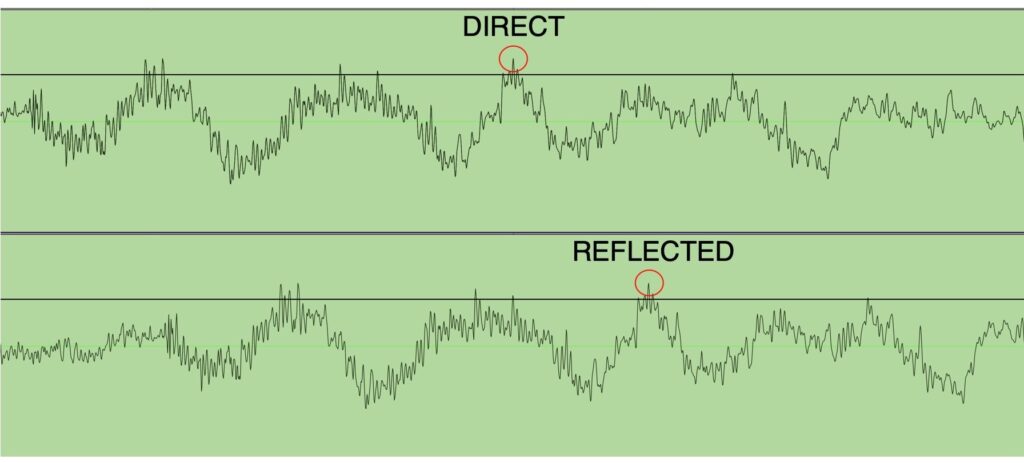
When sound waves reach your ears at slightly different times in their cycles, they are said to be out of phase with each other. (See our blog posting “What is Phase” for more details.) When the difference is less than 25 milliseconds (thousandths of a second, usually abbreviated as “ms”), a phenomenon called comb filtering occurs. It causes some frequencies to be cancelled (destructive interference) and others to be reinforced (constructive interference), resulting in a change in timbre that often sounds nasally or honky. Differences of greater than 25 ms are perceived as diffuse reverb or discrete echos (often called “delays”).
ROOM MATERIALS AND SHAPES
It’s not only the size of a room that impacts its reflections, but also the materials used to construct the wall, floor, ceiling and furniture. Hard surfaces like brick or concrete generate the most reflections because sound waves mostly bounce off them rather than being absorbed by them. For example, your acoustic guitar would sound very reverberant if played in a space like the one pictured below.
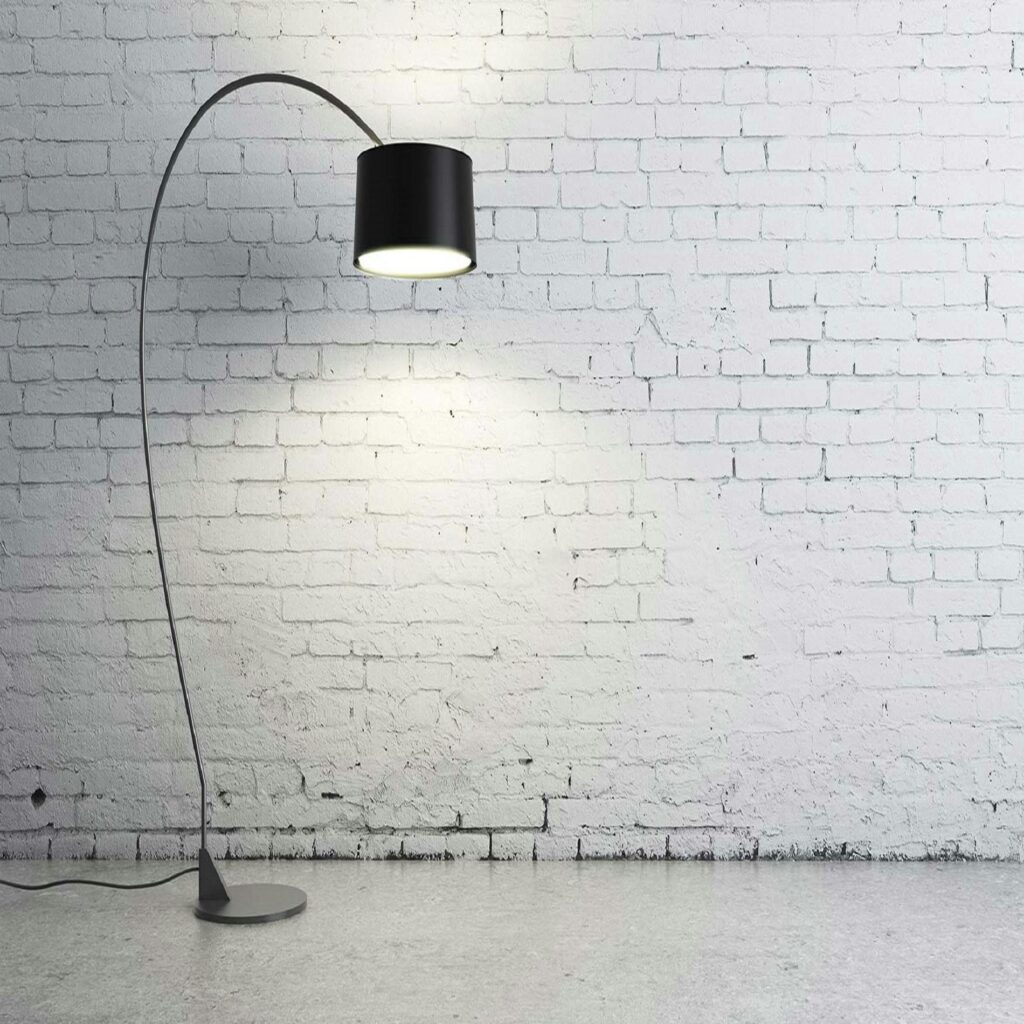
Absorptive materials such as carpets, acoustic ceiling tiles or panels filled with insulation generate fewer reflections because the sound essentially goes through them instead of bouncing off. For example, the sofa, throw rug and curtains (especially when fully drawn) in the room pictured below ensure that there will be little reflected sound.

In addition, the shape of a room can create a phenomenon referred to as standing waves, which can also degrade the sound of your acoustic guitar. These are sound waves that bounce back and forth between parallel walls. Standing waves cause low (bass) frequencies to be significantly reinforced or diminished (especially if you’re standing near corners or close to walls) and will affect the sound of your guitar to some degree.
As an example, the hard wall and floor surfaces in the room pictured below would cause many reflected waves to be generated, making for a great deal of reverb, plus the parallel walls would likely create standing waves. Together, both would probably have a deleterious effect on the sound of your guitar.

To demonstrate, let’s look at a couple of spaces in which your acoustic guitar would likely sound good. In the relatively small room shown in this first example, the sofa, throw rug and curtain provide a nice absorptive contrast to the wood table, hard walls and floor, plus the small cabinet in the corner might serve as an effective bass trap to some degree.

In the much larger space pictured below, the wall-to-wall carpeting will help offset the reflected waves coming off the hard walls and windows, plus the bay windows ensure that there will be no standing waves. Your guitar would probably sound amazing in this room!
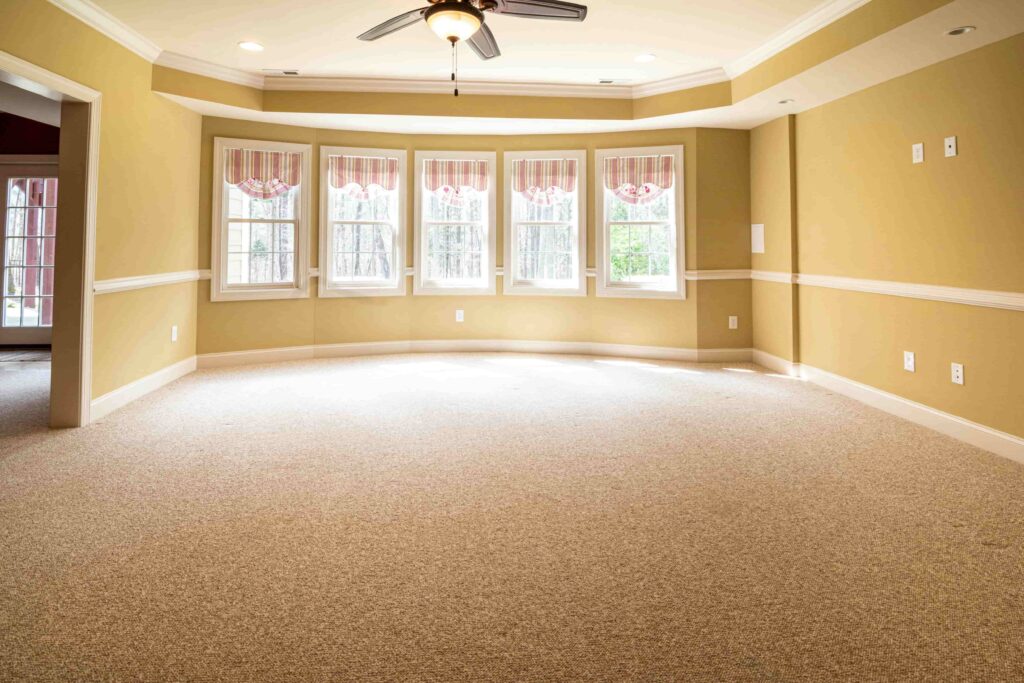
IMPROVING ROOM ACOUSTICS
The good news is that even if there are some issues with the space you’re playing in, there are steps you can take to improve the room’s acoustics. For example, if you’re recording your acoustic guitar, a simple way to reduce destructive interference by increasing the direct-to- reflected sound ratio is to shorten the distance between the guitar and the microphone.
As an example, here’s the sound of an acoustic guitar recorded with the mic placed about a foot away from the instrument:
Contrast that with the sound of the same guitar recorded with the same microphone, but this time placed two and half feet away. Notice the change in tone caused by the additional reflected sound.
The closer the mic is to the instrument, the fewer reflections it will pick up. However, because an acoustic guitar’s sound comes from its entire body, you typically don’t want to get closer than about eight inches, or the mic won’t get as complete a sonic picture.
Whether you’re playing live or are in a recording situation, that’s easily done, but there’s no practical way in either situation to change the distance between the guitar and your ears. However, you can certainly try moving to a different part of the room — you might be surprised by how much that can affect the sound. It’s best not to sit or stand directly in the center, though, especially in a room with symmetrical dimensions, because it can affect the bass response. Instead, if possible, position yourself about 40 percent of the way between the walls.
Beyond your positioning, the best defense against subpar room acoustics is trying to control reflections with what is known as acoustic treatment, which we’ll cover shortly.
People sometimes conflate acoustic treatment with soundproofing, but they’re not the same. Soundproofing a room requires creating a barrier so that sound from inside is kept from getting outside and vice versa. Soundproofing uses heavily absorptive materials and techniques like decoupling (construction techniques that reduce vibrations) to block the sound waves.
Acoustic treatment is intended to improve the sound by controlling reflections and reducing phase issues and standing waves. Yes, traffic and honking horns may interfere with your gig or recording session, and some of your playing may escape to the outside world, but it will sound a whole lot better to everyone (including you) inside the room!
ACOUSTIC TREATMENT
There are three main types of acoustic treatment. The first are known as absorbers. These are panels made of an absorptive material such as fiberglass, acoustic foam or mineral wool, and are used to reduce a room’s reflections. Commercially available absorbers are typically rectangular frames filled with one of the aforementioned materials.
Absorbers are usually placed on walls and the ceiling above your playing position (or in a studio, above the mix position) to control the early reflections. That way, you hear more direct sound and less reflected sound. If you don’t want to invest in dedicated absorbers, you can improvise with careful placement of cushioned furniture such as sofas or beds, or by placing a throw rug beneath your feet and/or hanging thick drapes in front of windows (glass is highly reflective, in the aural sense as well as the visual) and on the walls — even egg cartons glued to the wall behind you and ceiling above you can be used in a pinch.
Whether you’re installing commercial absorbers or are using DIY equivalents, they should ideally be placed at the first reflection points on your walls. An easy way to figure this out is to go to your playing position in the room and have another person hold a mirror as they move along each wall. The spots where your guitar body is visible to you in the mirror are where you should place your absorbers.
That being said, sometimes a room with carpeting, soft furniture and absorptive ceiling materials may have too few reflections and therefore sound “dead.” In those situations, diffusion is called for. A diffuser is a panel made of material designed to scatter sound waves. An important point to remember regarding both absorbers and diffusers is that they primarily work on mid- and high-frequency sound waves, but not those in the low-frequency range. For that you need bass traps, preferably placed in all corners of the room.
Commercially available bass traps are acoustic panels filled with material that’s thicker and denser than what’s in absorbers. Rolled-up carpet remnants or throw rugs are a good substitute for dedicated bass traps and sometimes work just as well.
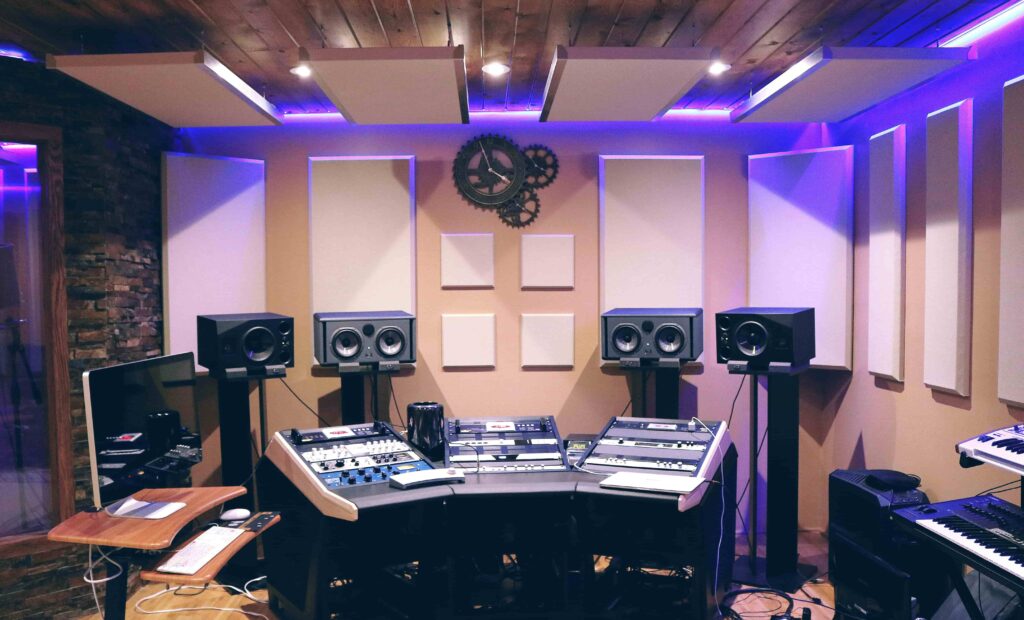
By understanding how the acoustics of a room affect the sound of your guitar, you can determine how to make your acoustic guitar shine in any environment. You may be amazed at the end result!










